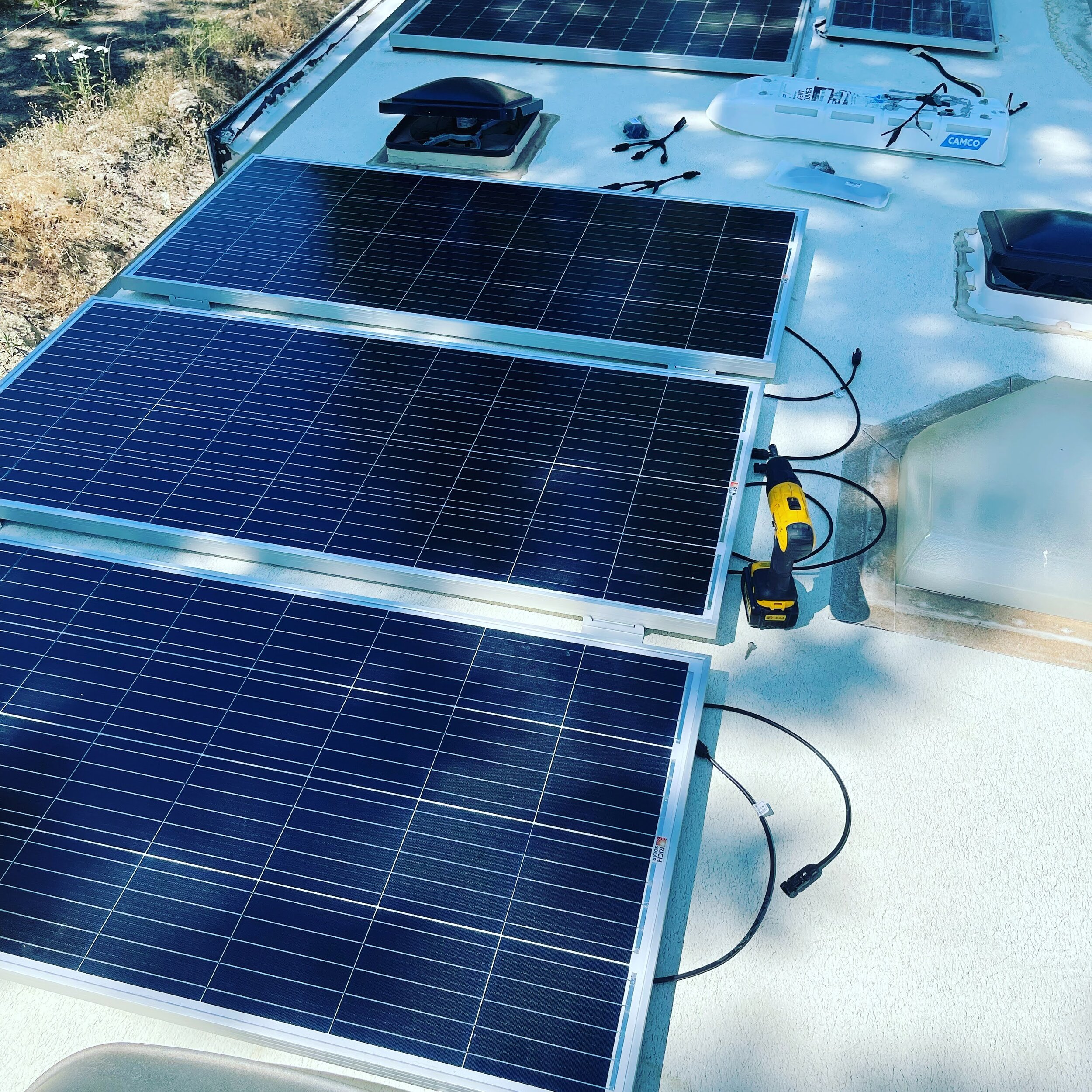
Staying powered, out here.
How Many Batteries did you buy?
This section should be called “all about batteries.” Solar is only one such way to replenish your batteries of choice.
Starting with batteries and working your way up to a solar recharging system to match it is ideal. This will help with sizing.
Our recommendation is to:
Find out your 24 hour energy needs across all your primary gear, pay close attention to the amp hours needs of equipment that requires your inverter to be running. Power inversion is a lossy process.
Once you have this amp hour number in hand consider the battery bank it will take to keep all this equipment running for as many 24 hour periods as possible without recharging. For example: Our primary draw for both our laptops and work peripherals is about 120 - 140 watts, all on native DC power, this is about 6-8 amps per hour of consumption. Our 300ah battery can sustain this usage for about 48 hours before it reaches the end of its capacity.
Once you have your batteries spec’ed you can then work to decide how fast do you want to be able to restore those lost amp hours and how much sun will you require to go from empty to full on your specific set of batteries with just solar as your means of charging. Your solar needs to be capable of reaching the charge voltage of your battery bank, this differs based on chemistry.
Our Setup:
400 AH of AmpereTime Lithium Batteries
1000 watts of RichSolar Mono Crystalline Panels, roof mounted (5x200w Panels.)
2x 100 watt Renogy Solar Suitcases for low lying sunrise and sunset power.
Powermon bluetooth battery monitoring system. This helps us know exactly how much power we have on hand at anytime and our current draw or charge rate. You cannot boondock without this, in our opinion. Do not rely on the LED lights of your trailer/RV to tell you a battery is “full.”
Victron 150/60 Solar Controller with Bluetooth. The best MPPT controller on the market in our opinion. We have tried PWM and the gains of MPPT controllers of up to 30 percent improved charge rate is worth it.
Upgraded Xantrex SW3200 3000 Watt Pure Sine Inverter (replaced 22 year old factory Xantrex Freedom Combi.)
Where to learn more about solar and batteries:
Our Powermon Remote Display, tracking house battery capacity, SOC, charge rate, discharge and more while also monitoring the voltage of our starter batteries.

What we power + staying DC native
While having a lot of solar and batteries is helpful, drawing that power as AC (household alternating current) is a lossy process involving an inverter. This just means that to make say 100 watts of AC from your DC batteries, the inverter may use 130 watts of energy, resulting in more power use. We still use our inverter for lots of stuff, but whenever possible you want to charge and run things on native DC 12v power to conserve energy and remain more efficient.
We use native DC 12v devices with 12v charging to work and play:
We work on Macbook Pro Laptops
We charge them with Macbook Pro USB-C 12v Chargers
Our internet setup is (details here) powered by 12v
Our Xantrex Freedom Combi, factory installed in 2001 by Safari Motor Coach finally failed after 23 years of service. We have replaced it with a Xantrex SW3200 3000 Watt Pure Sine.
Our coach is factory equipped with a Onan 7500 QD Diesel Generator, available in emergencies to power and replenish our batteries at the push of a button.
